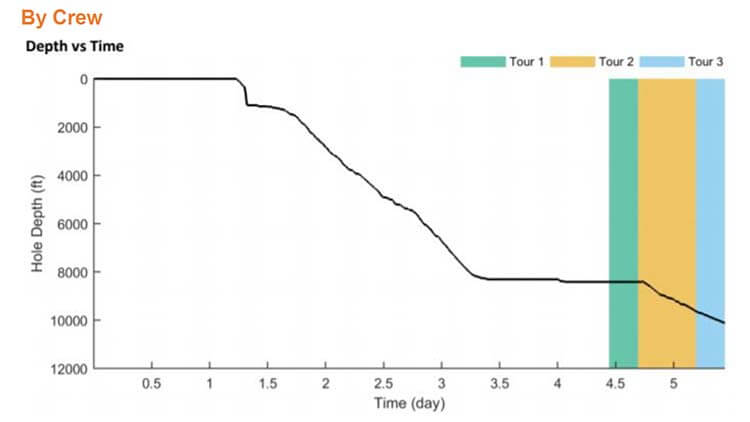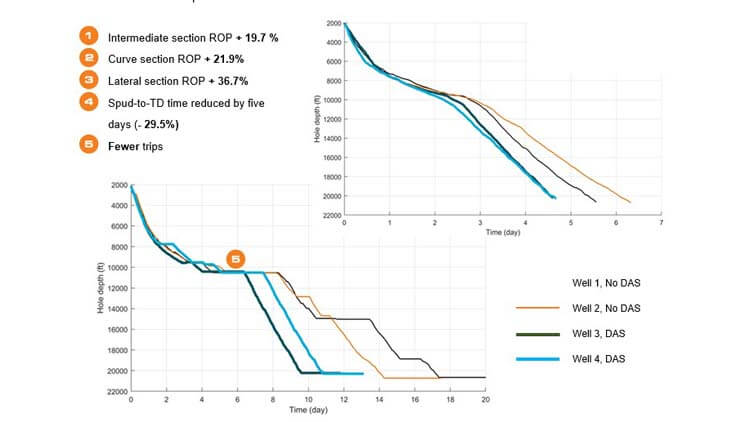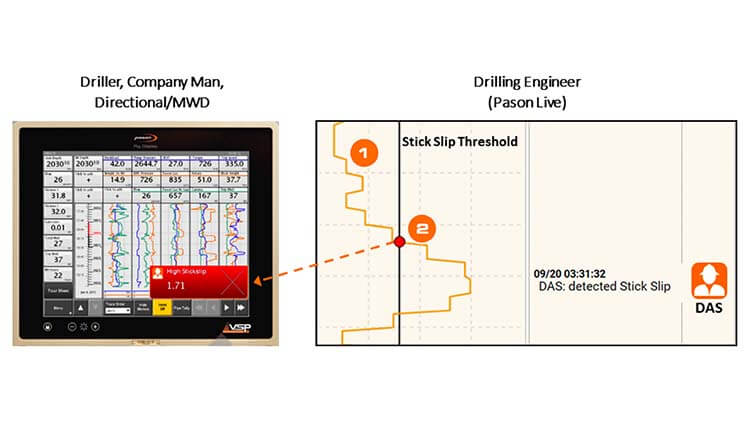Technology news

Technology
Pason DataLink: a faster, more streamlined drilling data solution
STORY: Published May 5, 2020
Although we’re currently in uncertain times, Pason has remained a reliable energy services and technology provider to our customers.

Drilling Data
KPI Reports: A daily look at critical statistics to help your business objectives
PDF: Published on Pason, April 24, 2020
Automated KPI Reports – Daily Reports
Pason’s Daily KPI Reports provide critical statistics and valuable insights into the previous day’s operations. These KPI reports are generated using sensor data, and can be retrieved from the DataHub, Pason Live mobile app, or auto-generated daily email.

Drilling intelligence
A DAS case study of drilling successful wells in the Bakken region
PDF: Published on Pason, April 24, 2020
DAS – Case Study
In 2019, we closely studied a Bakken pad rig as it drilled four offset wells. The rig drilled the wells with and without DAS, which provided excellent comparative data. The crew drilled wells 1 to 4 in sequential order: wells 1 and 2 without DAS, wells 3 and 4 with DAS.
The results speak for themselves.

Drilling Data
Weight on Bit, Differential Pressure and the algorithm that improves the quality of your data
SPE PAPER: Published on One Petro, April 2, 2020
An Algorithm to Automatically Zero Weight on Bit and Differential Pressure and Resulting Improvements in Data Quality
Weight on bit (WOB) and differential pressure (DIFP) are two essential parameters derived from surface sensors during the drilling process. However, there can be significant errors in these measurements due to improper zeroing of these traces. Regular zeroing of WOB is important to ensure that it is calibrated for additional stands that have been added to the drillstring. Similarly, regular zeroing of DIFP is important to ensure that added hydrostatic pressure, which increases with depth, is taken into account, and to ensure that DIFP has been calibrated to the correct pump rate. In this paper, we quantify the errors due to forgotten and incorrect zeroing, and discuss an algorithm that was developed to automatically zero WOB and DIFP to eliminate these errors.
This study has two main sections. In the first section, the current practice of zeroing WOB (prior to rotary drilling) is analyzed in 40 onshore wells. It is found for 86% of all stands that WOB is either zeroed incorrectly or not at all. An algorithm is developed to determine the appropriate time to perform the zero WOB operation. Using this algorithm, it is found that the average WOB error per stand due to improper zeroing is 16.8 and 17.6% in the vertical and lateral wellbore sections, respectively. Further, it was found that repeated forgotten zeroes could result in large errors, particularly in the vertical where 8% of stands have WOB inaccuracies of more than 30%. In the second section, the analysis is repeated for DIFP and it is found that zeroing DIFP is forgotten in 51% of all stands, resulting in errors of 17.5 and 8.9% in the vertical and lateral, respectively. In the vertical, 9.9% of stands have DIFP inaccuracies of more than 30% due to forgotten zeroing. Applying these algorithms to historic data can eliminate these errors, and improve the effectiveness of data-based drilling optimization and analytics. Further, these algorithms could be implemented in an electronic drilling recorder (EDR) to improve the quality of real-time data at the rig.
Copyright © 2020 Society of Petroleum Engineers
Credits
Adam C. Neufeldt (Pason Systems)
Stephen W. Lai (Pason Systems)
Sean D. Kristjansson (Pason Systems)

Drilling intelligence
New patent issued to Pason for drilling data technology (USA)
PATENT: Published on United States Patent, March 17, 2020
Method, System, and Medium for Controlling Rate of Penetration of a Drill Bit
Methods, systems, and techniques for controlling the rate of penetration of a drill bit use drilling parameter measurements read from drilling parameter sensors to evaluate control loops, with the output of one of the control loops at any given time being used by an automatic driller to control the rate of penetration. For each of the drilling parameters, the automatic driller reads a drilling parameter measurement, determines an error measurement that represents a difference between a drilling parameter setpoint and the drilling parameter measurement, and from the error measurement determines an output signal proportional to the rate of penetration of the drill bit. The output signal of one of the control loops is subsequently selected and used to control the rate of penetration.
Credits
Holt; Trevor Leigh (Calgary, CA)
Wilson; Thomas William Charles (Calgary, CA)
Hepburn; Quinn Harrison (Calgary, CA)

Drilling intelligence
Presentation: See how closed-Loop drilling optimization reduces drilling costs through any formation
PRESENTATION: Published on Pason, March 3, 2020
Large-Scale Deployment of a Closed-Loop Drilling Optimization System: Implementation and Field Results
Presentation from the March 2020 Society of Petroleum Engineers (SPE) conference in Galveston, Texas.
Credits
Pason Systems: Stephen Lai, James Ng, Aaron Eddy, Sergey Khromov, Dan Paslawski, Ryan van Beurden, Lars Olesen
ExxonMobil Upstream Research Company: Gregory Payette, Benjamin Spivey

Drilling intelligence
New patent issued to Pason for drilling data technology (CA)
February 18, 2020
New patent issued to Pason for drilling data technology (CA)
PATENT: Published on Canadian Intellectual Property Office, February 18, 2020
Method and Apparatus for Drilling a New Well Using Historic Drilling Data
A method for drilling a new oil or gas well in a selected geographical location comprises extracting drilling modes from historic drilling data obtained from a group of drilled wells in the selected geographical location using a pattern recognition model. Each drilling mode represents a distinct pattern that quantifies at least two drilling variables at a specified drilling depth. The method also comprises selecting a sequence of drilling modes at positions along a reference well as reference drilling modes that represent more efficient values for a selection of one or more of the at least two drilling variables compared to other extracted drilling modes; associating drilling parameter settings with the reference drilling modes; and drilling the new oil or gas well applying at least some of the drilling parameter settings.
Credits
KRISTJANSSON, SEAN (Canada)
LAI, STEPHEN (Canada)
TREMAINE, DEAN (Canada)

Drilling intelligence
Avoid destructive vibrations with instant notifications when high stick-slip is detected
PDF: Published on Pason, February 4, 2020
DAS Stick-Slip Detection
DAS uses a highly accurate model to estimate downhole stick-slip. ExxonMobil and Pason have validated this model against downhole tools from several different vendors. The system will automatically alert users when high stick-slip is encountered.